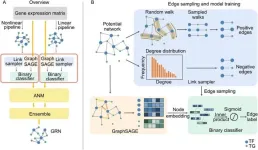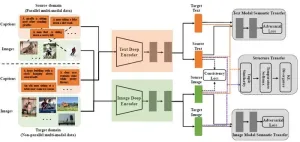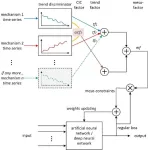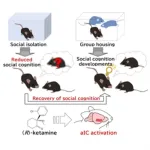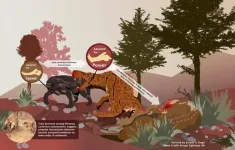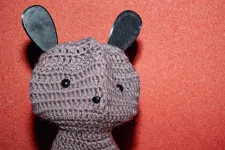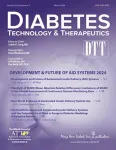New research reveals how cancer hijacks immune cells to promote tumour growth
By understanding how tumours reprogramme neutrophils, one of our most abundant white blood cells, researchers can now develop new therapeutics to block this process and inhibit tumour growth.
2024-02-23
(Press-News.org) A new research study led by A*STAR.Singapore Immunology Network (A*STAR.SIgN) has found that neutrophils—one of the most abundant white blood cells in our body—change drastically in certain cancers, adopting a new function whereby they promote tumour growth. By carefully studying neutrophils as soon as they enter the tumour, scientists from A*STAR.SIgN also uncovered ways to accurately differentiate tumour-promoting neutrophils from normal neutrophils present in the rest of the body. Neutrophils play important and irreplaceable roles in fighting infections, hence, depletion of neutrophils due to chemotherapy usually leave cancer patients susceptible to potentially fatal infections.
With the ability to specifically single out tumour-promoting neutrophils, this represents a novel way in which tumours can be targeted while preserving the normal neutrophil response. The study, “Deterministic reprogramming of neutrophils in tumours”, was published in Science on 12 January 2024.
Neutrophils are characterised as the first responders of the immune system, as they migrate rapidly from the blood into tissues to fight off disease-causing pathogens. In cancer, scientists have previously showed that various types of neutrophils present within the tumour play a crucial role in supporting tumour growth, which in turn lead to poorer clinical outcomes in cancer patients. Yet, it was unclear how these different types of neutrophils were generated, and whether they worked in a co-operative fashion to drive tumour progression. Thus, specific targeting of tumour-promoting neutrophils could not be achieved.
To address this, a team of A*STAR.SIgN scientists utilised an experimental pre-clinical model of pancreatic cancer, demonstrating that diverse types of neutrophils acquired new characteristics and functions once they migrated into the tumour, a process that was termed “reprogramming”. Neutrophils that had undergone this reprogramming process would then be unified as a singular population regardless of their initial starting point. Thus, by tracking the reprogramming process, the team could now study how reprogrammed neutrophils ensured the continued growth of the tumour. Reprogrammed neutrophils promoted the growth of new blood vessels within the centre of the tumour, which likely allowed the tumour to overcome the limited access to oxygen and nutrients. When the researchers specifically blocked this vessel-promoting function of reprogrammed neutrophils, or removed them from interacting with the tumour, they were able to reduce the growth of pancreatic tumours in pre-clinical models.
The team also found similar instances of reprogramming when they re-analysed other published data sets in humans, indicating a common pathway where neutrophils can be similarly modified to promote tumour growth in certain solid cancers. As such, this study holds promise for future therapeutic approaches in cancer that target neutrophil reprogramming and their eventual function, synergising with current treatment and immunotherapies that activate the immune system to destroy tumours.
Dr Melissa Ng, SIgN fellow at A*STAR.SIgN and co-corresponding author on the study, said, “This study leverages the team’s previous work, which identified how diverse neutrophils can be. In this study, we expand on our previous knowledge by uncovering the mechanisms through which tumours induce neutrophils to adopt a tumour-promoting response. This allows us to selectively target reprogrammed neutrophils, which will improve and diversify treatment options for human cancers, while lessening the impact from just targeting neutrophils in a non-specific manner.”
Prof Lam Kong Peng, Executive Director at A*STAR.SIgN, said, “Breakthrough science, such as this study led by A*STAR.SIgN, is integral as it allows us to build the next generation of cancer immunotherapeutics to improve clinical outcomes for Singapore and Singaporeans.”
The team plans to further investigate the factors that drive neutrophil reprogramming in human cancers. This is crucial for developing more effective ways to target and treat cancer through strategies focused on neutrophils.
END
ELSE PRESS RELEASES FROM THIS DATE:
2024-02-23
Gene regulatory networks (GRNs) depict the regulatory mechanisms of genes within cellular systems as a network, offering vital insights for understanding cell processes and molecular interactions that determine cellular phenotypes. Transcriptional regulation, a prevalent type for regulating gene expression, involves the control of target genes (TGs) by transcription factors (TFs). One of the major challenges in inferring GRNs is to establish causal relationships, rather than just correlation, among the various components ...
2024-02-23
Image-sentence retrieval task aims to search images for given sentences and retrieve sentences from image queries. The current retrieval methods are all supervised methods that require a large number of annotations for training. However, considering the labor cost, it is difficult to re-align large amounts of multimodal data in many applications (e.g., medical retrieval), which results in unsupervised multimodal data.
To solve the problem, a research team led by Yang YANG published their new research on 15 Feb 2024 in Frontiers of Computer Science co-published by Higher Education Press and ...
2024-02-23
Deep learning modeling that incorporates physical knowledge is currently a hot topic, and a number of excellent techniques have emerged. The most well-known one is the physics-informed neural networks (PINNs). PINN integrates the residuals of the system’s governing partial differential equations (PDEs) and the initial value/boundary conditions into the loss function, thus the resulting model satisfies the constraints of the physical laws represented by the PDEs. However, PINN cannot work if equations among the key physical quantities of the system have not been established. To ...
2024-02-23
Osaka, Japan – Well-being is important for everyone, especially when we feel lonely or isolated. Depression is a serious challenge for many people and finding an effective solution is key.
In a recent study published in Molecular Psychiatry, researchers from Osaka University used a mouse model of depression to reveal that one form of ketamine (a common anesthetic) in low doses can improve social impairments by restoring functioning in a specific brain region called the anterior insular cortex.
Ketamine is often used at low doses to treat depression, but its actions in the brain remain relatively unclear. Generally, ketamine refers to a mix of two different forms of ketamine: ...
2024-02-23
The evolutionary success of the first large predators on land was driven by their need to improve as killers, researchers at the University of Bristol and the Open University suggest.
The forerunners of mammals ruled the Earth for about 60 million years, long before the origin of the first dinosaurs. They diversified as the top predators on land between 315–251 million years ago.
Researchers studied the jaw anatomy and body size of carnivorous synapsids, using these traits to reconstruct the likely feeding habits of these ancient predators and chart their ecological ...
2024-02-23
AI holds the potential to revolutionize healthcare, but it also brings with it a significant challenge: bias. For instance, a dermatologist might use an AI-driven system to help identify suspicious moles. But what if the machine learning model was trained primarily on image data from lighter skin tones, and misses a common form of skin cancer on a darker-skinned patient?
This is a real-world problem. In 2021, researchers found that free image databases that could be used to train AI systems to diagnose skin cancer contain very few images ...
2024-02-23
Increased use of Paxlovid, the antiviral drug used to treat COVID-19, could prevent hundreds of thousands of hospitalizations and save tens of billions of dollars a year, according to a new epidemiological model published by researchers at The University of Texas at Austin. In fact, epidemiologists found that treating even 20% of symptomatic cases would save lives and improve public health.
A 2023 National Institutes of Health study found that only about 15% of high-risk patients take Paxlovid when infected with COVID-19. Using a multiscale mathematical model based on ...
2024-02-23
From smart virtual assistants and self-driving cars to digital health and fraud prevention systems, AI technology is transforming almost every aspect of our daily lives—and education is no different. For all its promise, the rise of AI, like any new technology, raises some pressing ethical and equity questions.
How can we ensure that such a powerful tool can be accessed by all students regardless of background?
Inspired by this call to action, USC researchers have created a low-cost, accessible learning kit to help college and high school students build their own “robot friend.” Students can personalize the robot’s ...
2024-02-23
A special 13-article supplement to the peer-reviewed journal Diabetes Technology & Therapeutics (DTT) examines the “Development and Future of Automated Insulin Delivery (AID) Systems. Click here to read the supplement now.
Included in the supplement is the article titled “A Peek Under the Hood: Explaining the MiniMed™ 780G Algorithm with Meal Detection™ Technology", by Benyamin Grosman, PhD and his Medtronic algorithm team with co-authors Ohad Cohen, MD, and Robert Vigersky, MD, Chief Medical Officer at Medtronic. James Thrasher, MD “Early ...
2024-02-23
RENO, Nev. – A multi-agency study, spearheaded by researchers from the University of Nevada, Reno’s College of Agriculture, Biotechnology & Natural Resources and the U.S. Department of Agriculture, underscores the impacts of strategic cattle grazing, particularly on restoring the declining population of the greater sage-grouse bird, a keystone species in the Great Basin region.
Amidst ongoing decline, the U.S. Fish and Wildlife Service acted by listing the sage-grouse for protection under the Endangered Species Act in 2011. This move prompted the Bureau of Land Management to develop a federal conservation plan for the species ...
LAST 30 PRESS RELEASES:
[Press-News.org] New research reveals how cancer hijacks immune cells to promote tumour growth
By understanding how tumours reprogramme neutrophils, one of our most abundant white blood cells, researchers can now develop new therapeutics to block this process and inhibit tumour growth.
